In the early 1800s, Natchez became strategically important as the southwestern corner of the United States, and Thomas Jefferson ordered that the road be widened to allow for wagons. Then came the steamboat era, during which Natchez prospered, and for a time, it was home to the most millionaires of any town in the U.S.
Today, the Natchez Trace Parkway is a scenic drive running from Natchez to Nashville, administered by the National Park Service. We wanted to drive part of the parkway, but first, we thought we’d check out Natchez itself. As in many southern towns, we found that one of the main tourist activities is to tour antebellum homes. We arbitrarily picked a home named Rosalie to tour.


The home turns out to be owned by the Daughters of the Revolution, an organization of female descendants of American soldiers of the Revolution. Inside the house, we had a different tour guide for practically every room, all DAR members and all wearing period dresses.
Here’s the ladies’ sitting area, viewed from the men’s sitting area:
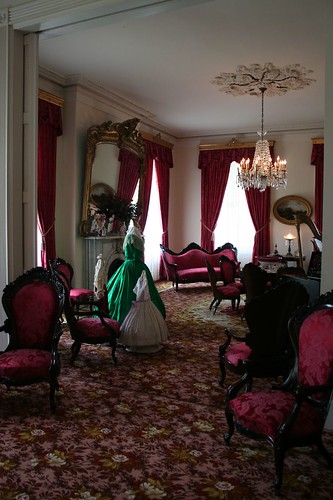
The china was quite beautiful. Each piece had a different design.
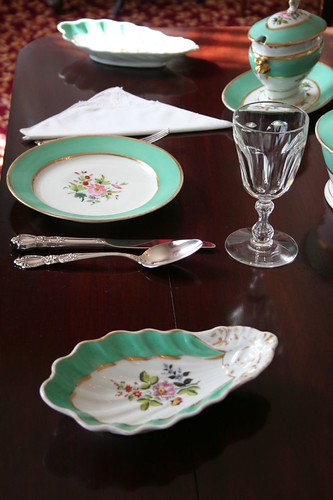
From the second-floor deck, we could see the Mississippi.
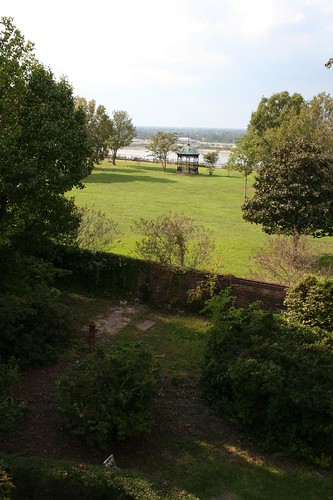
The home and furnishings were extremely well preserved. Most other antebellum homes in Natchez were destroyed by Union troops during the Civil War (or the “War Between the States” as it’s known in the South). But a Union general took a special interest in Rosalie, and when he and his troops moved in, he packed up the house’s furnishings and stored them in the attic, making sure that the troops didn’t do much damage. Indeed, the only place with visible damage was a fireplace that the soldiers used for cooking.
After the tour, we took one last photo of the front entrance.
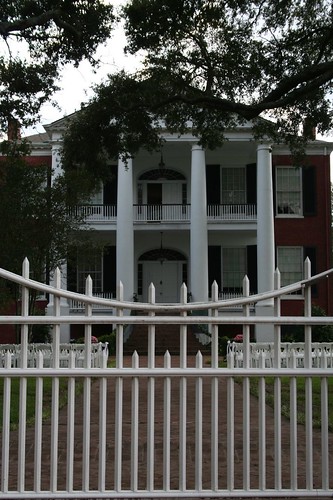
After the tour, we visited the William Johnson house, which is administered by the Park Service. William Johnson was a barber and businessman who ran several barber shops in Natchez. He was also a black man, freed by his owner who is also widely presumed to have been his father. Johnson and his wife raised 10 kids in the house, and as Johnson became successful, he owned his own slaves. The home itself wasn’t especially interesting, but the Park Service visitor center provided fascinating insight into the life of a free black man, in part through Johnson’s own diary.
Then we parked in downtown Natchez and walked around a bit. Our parking spot was right next to the Mississippi.
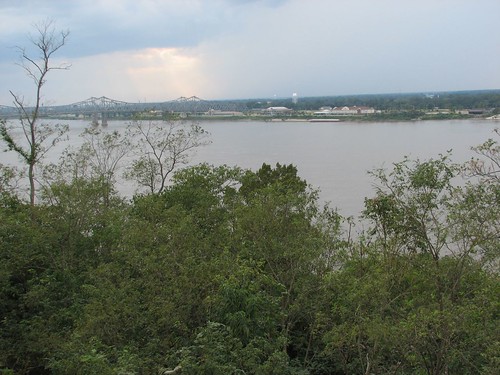
Stanton Hall is another famous Natchez home, but it was closed today for a wedding.

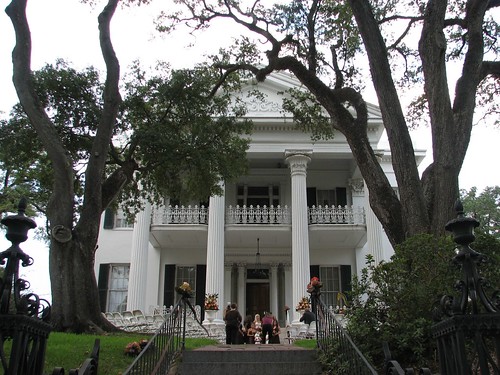

We passed various other historic buildings as we wandered around.

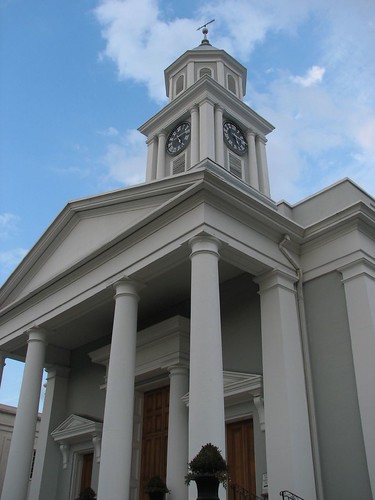
People in Natchez were amazingly friendly, greeting us from their porches as we wandered around. It seems that southern hospitality is alive and well.
After our tour, we went to the Pig Out Inn barbecue and shared a pulled-pork sandwich, just to see what Mississippi barbecue was like. It turned out not to be much different from Texas barbecue, but it was quite tasty. We stayed at Natchez State Park for the night.
The next day, we drove the Natchez Trace Parkway to the Windsor Ruins, the remains of the largest antebellum mansion in Mississippi. It survived the war, but ironically burned down shortly thereafter when a fire was ignited by a careless smoker. Now all that’s left are some brick columns and ironwork.


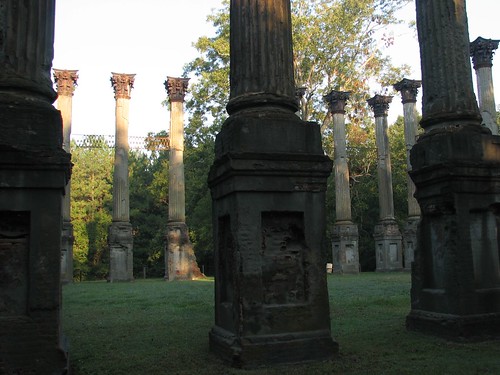
Next we headed to Port Gibson. During the war, General Grant said it was too beautiful to burn, so it was spared and many of its antebellum homes are nicely preserved.
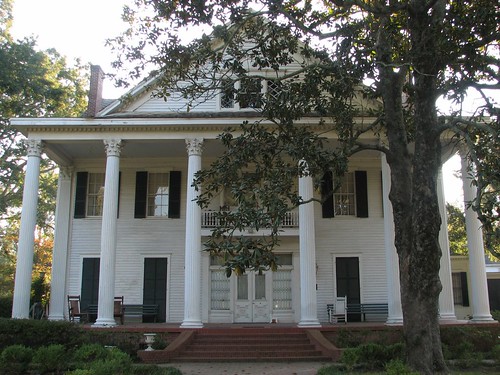
The Natchez Trace Parkway is a paved road that closely follows the old Trace route. At a few places along the parkway, you can get out of your car and walk the actual Trace. It turns out to be an extremely well-worn route, a wide rut perhaps 10 feet deep.

Our next destination was Vicksburg. Our first stop in Vicksburg was the Corner Drugstore, which unfortunately happened to be closed because it was Sunday. We walked down to the river from the drugstore, though, and found some interesting sights.
First was a restored historic railroad station:

Then we walked through a seemingly very new park, with music playing and beautiful murals in front of the river.


That’s a casino boat behind the murals in the second picture.
The buildings in the historic downtown area were reminiscent on New Orleans, with the brick construction and wrought-iron railings.

Our next stop was Walnut Hill for lunch. We read about it in our Let’s Go USA travel guide – excellent, authentic down-home Southern cooking. Customers get two choices: the blue plate, which is a meat and three vegetables, or the “round table,” which is all you can eat from a dozen or so different items. The menu looked fantastic:
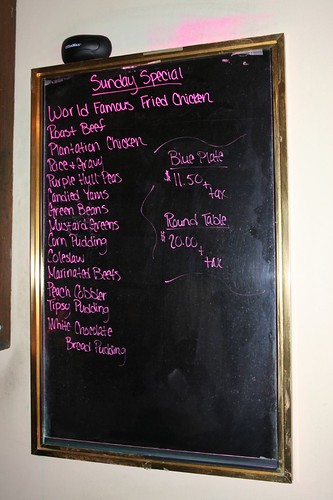
We chose the round table – we were only going to do this once, so why not go all out. We were there right at the restaurant’s opening time of 11:00, along with four older women from Texas who come to Vicksburg together once or twice a year to gamble on the riverboats and eat at Walnut Hill. Shortly after the six of us sat down, servers started bringing out food – cornbread, coleslaw, roast beef, two kinds of chicken, yams, corn pudding, and on and on. We tried everything and it was all delicious. Here’s a photo of what was left after we finished eating, but it doesn’t quite do justice to the enormity of the feast.
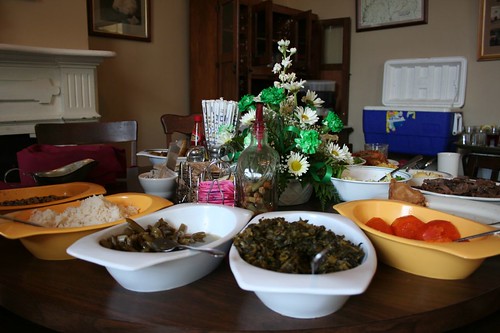
After we ate our desserts, we waddled out of the restaurant and headed to the Vicksburg battlefield. During the Civil War, Vicksburg was regarded by Union troops as “the key” to the war. Capturing Vicksburg and gaining control of the Mississippi would mean cutting off supplies to several Confederate states, including Texas and Louisana, and would allow the Union army to move men and supplies freely down the river.
At the battlefield, we watched the park video and drove the main road through the battlefield. By this point, it was afternoon and very hot. Given the heat and our full bellies, we weren’t as appreciative as we probably could have or should have been of what we were seeing. Despite feeling sluggish, we made a number of stops, including at the Illinois memorial, which was an impressive building.
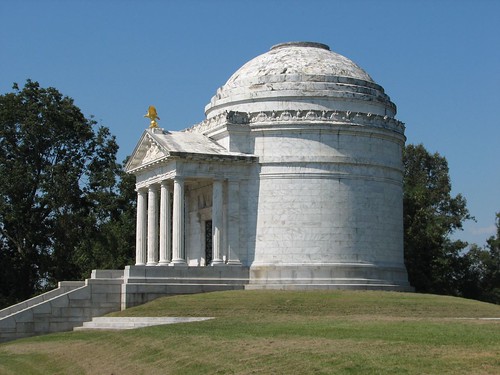

Here’s the seal inside the building.
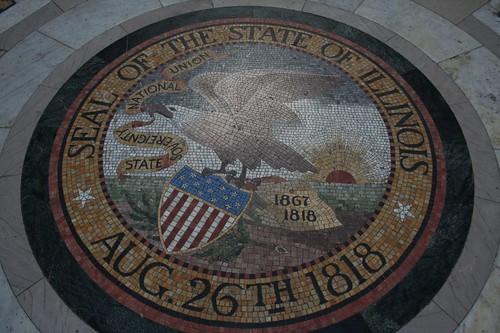
Similar to the battlefield at Gettysburg, there were monuments and memorials everywhere. Some were just small stone markers; others were enormous elaborate buildings like the Illinois memorial.
Here is one of the Civil War era canons:

The coolest thing at the battlefield was the reconstructed USS Cairo. This was an early ironclad ship that was sunk during the war. It was recovered in the 1960s and put back together under a huge awning.
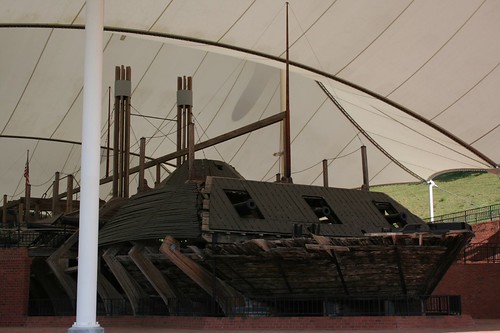
The ship was accompanied by a museum with a large array of items that were recovered with the ship, ranging from kitchen supplies to soldiers personal items.
Next, we went to the Coca-Cola Museum. As it turns out, Vicksburg is where Coke was bottled for the first time. Joseph A. Biedenharn ran a soda fountain, and Coke was a very popular drink at the fountain. But Biedenharn also had rural delivery customers who didn’t make it into the fountain, and he thought they would be good Coke customers, too. He proposed bottling Coke, and although the Coca-Cola company was skeptical, they gave their blessing. Biedenharn was on his way, and needless to say, Coke – which contained actual cocaine in those days – turned out to sell even more in bottles than at the fountain.
Upon entering the building, we encountered a gorgeous marble soda fountain.
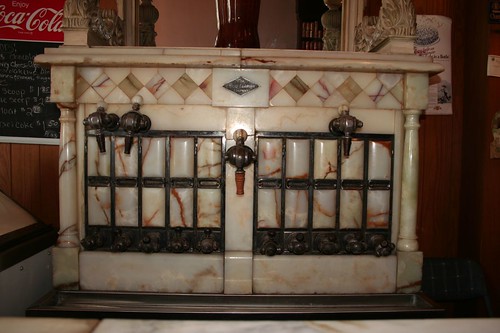
Coke was just one of the 10 flavors that could be served from the fountain – sarsaparilla, root beer, grape, and peach were others.
Opposite the fountain was a large collection of coke bottles commemorating special events, sports teams, NASCAR drivers, and more.

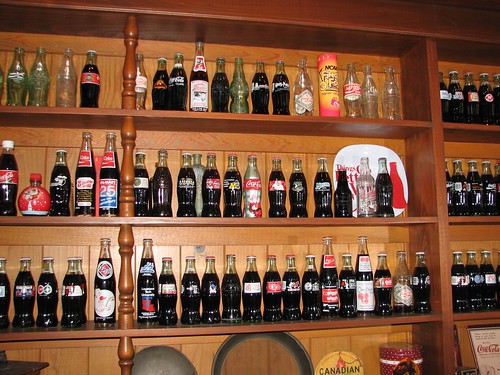
Inside the museum proper were various displays of Coke memorabilia.

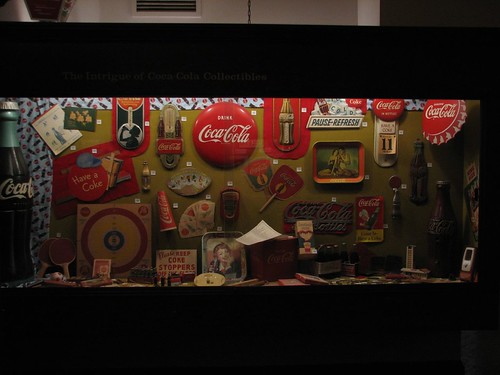
Finally, in a separate building behind the museum, was an old soda fountain.
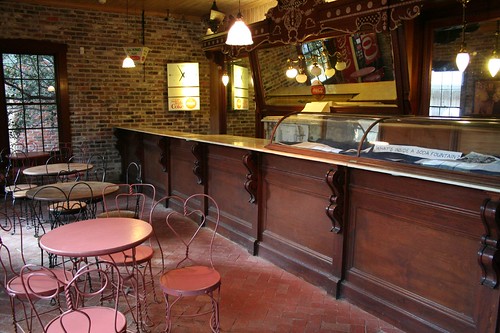
We discovered there was a state park called LaFleur’s Bluff in Jackson, so we decided to camp there for the night. The campground was almost full, but we managed to snag a waterfront site on a pretty bayou.
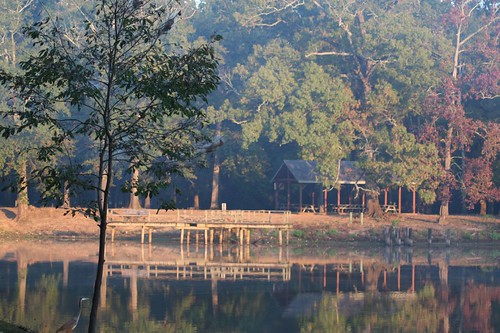
Egrets wandered around the water, looking for dinner.

The bathhouse was an elaborate affair, a log house built up on stilts.
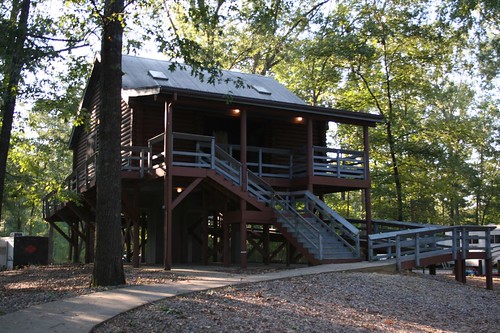
We took an evening jog and passed another swamp that was even prettier.

The next morning, we went to the Mississippi capitol building. During our travels, we’ve found that state capitol buildings are pretty to look at, historically interesting, and free entertainment. So we stop in when we can – Salt Lake City, Denver, and now Jackson. We suppose the British Columbia parliament building in Victoria counts, too.
The building had the characteristic central dome, this one with a huge golden eagle on top that’s eight feet high and has a 15-foot wingspan.
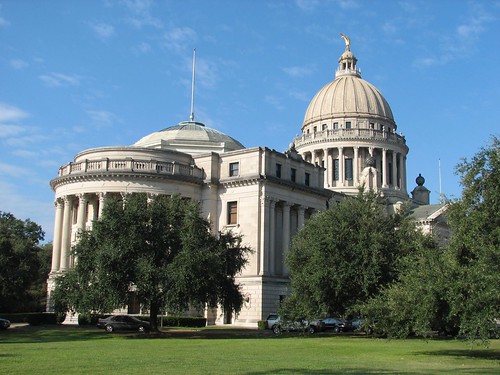

Once inside, we did the typical tourist thing – we went to the center of the building and stared up at the inside of the dome.

A relief of “blind justice” decorated each of the four sides of the central area.
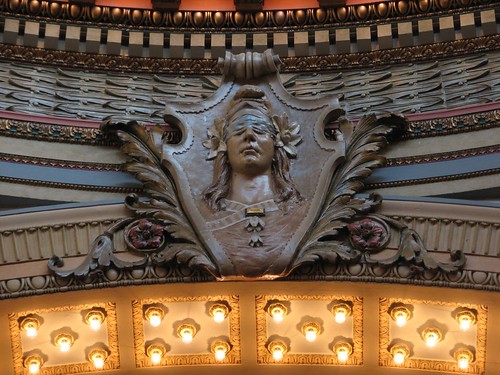
We ascended to the second floor in an antique elevator, complete with an operator who opens and closes the doors and pushes the buttons.
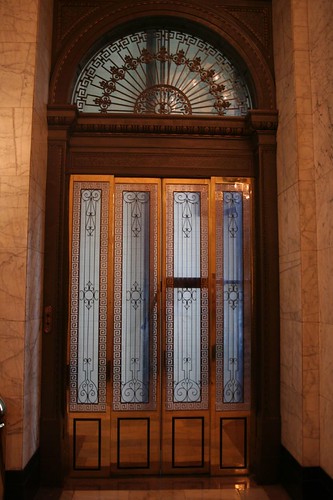
Mother Mississippi looked down on us as we ascended the grand staircase to the next floor.
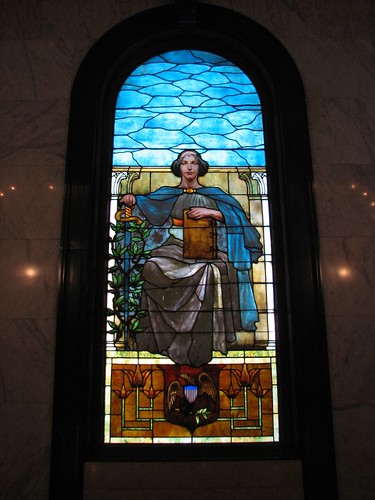
The Senate and House chambers were very ornate and had their own mini-domes of stained glass.

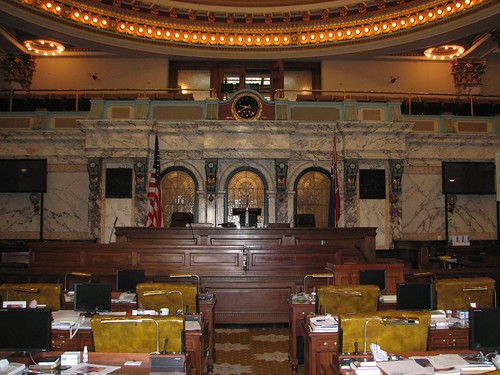

Rebel pride is still alive and well, in the artwork of the capitol and even in the state flag.

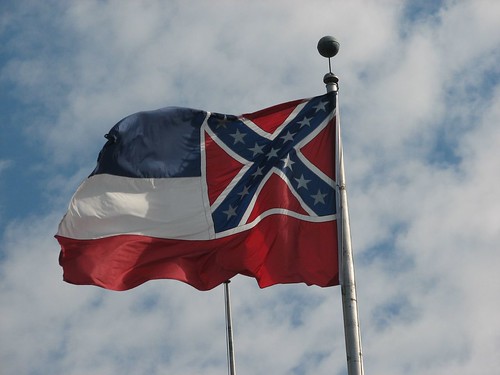
We saw these marble water spigots all over the place. They weren’t working, and we never found out the story behind them.

The most interesting decorative element of the capitol was the huge variety of marble, both in normal colors like black and white and in exotic shades of pink and green. Much of the marble is scagliola (man-made). Also interesting was the heavy decorative use of bare light bulbs, which we thought gave the interior a bit of a circus feel.
After Jackson, we headed back south to the Gulf and Biloxi. As we were driving along the coast, we reached a section of beach with hundreds of classic cars, so we stopped. It turned out to be opening day of Cruisin’ the Coast, an annual get-together for thousands of owners of old cars.
There were all sorts of neat cars:
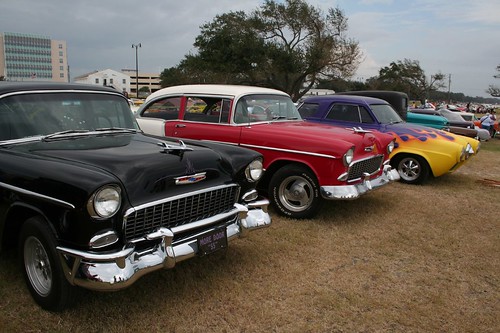
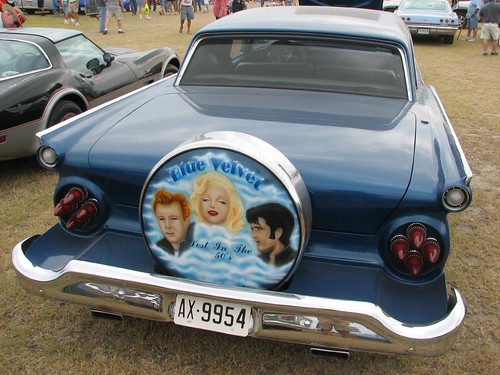

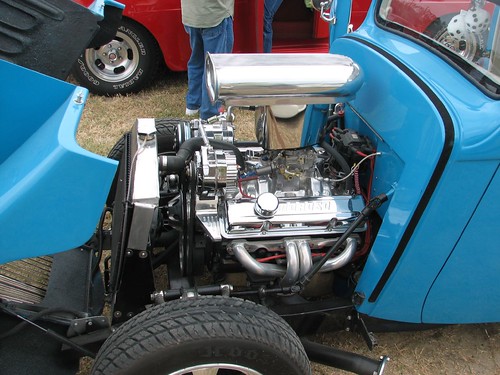

A couple drove by in a pink boat of a car.

After getting our fill of cars, we headed to Beauvoir, home of Jefferson Davis late in his life. Jefferson Davis, the president of the Confederacy, turns out to be the answer to a trivia question: Who was the only citizen of the Confederacy who wasn’t offered American citizenship after Reconstruction? Yep, Davis lived out the rest of his life as a man without a country. After the defeat of the Confederacy, Davis supposedly lived the rest of his life in poverty, but he still had a lovely house and servants, and he still traveled far and wide to give speeches.
Here’s a statue of Davis:
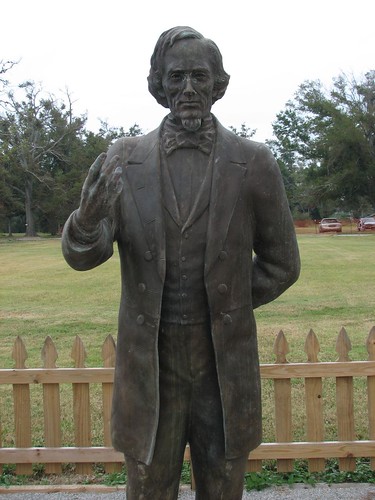
Here’s his home:

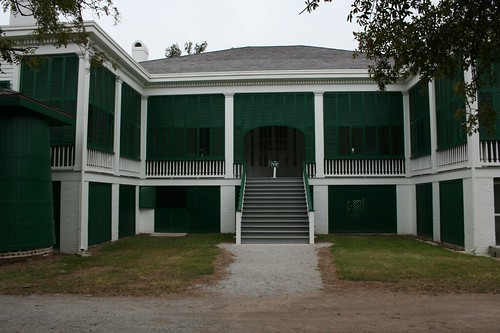
The most interesting thing about the home architecturally was the use of indoor and outdoor living space. The house had nearly as much porch space as it did indoor living space. Also, the space underneath the house was used for hanging hammocks for the children to sleep on and for sitting during hot days. In the Mississippi heat in the days before air conditioning, such fluidity of indoor and outdoor spaces was necessary for comfort.
The home was heavily damaged during Hurricane Katrina so there weren’t many people visiting. We got a private tour from a docent at the museum and while we toured, a couple of artists were restoring the elaborate paint jobs on the walls and ceiling. Given that the porch and much of the roof was ripped off the building during Katrina, the building was in quite good shape. Two other nearby cottages had to be torn down and were being completely rebuilt.
On the grounds was the Tomb of the Unknown Confederate Soldier.

That night, we stayed at the Gulf Islands National Seashore. Of the hundreds of nights we’ve spent in our tent, this one turned out to be the rainiest. The tent got literally pounded for hours on end. It held up admirably, though, and we stayed dry.
The next day, we headed to Mobile, Alabama, where we walked around the historic downtown area. In some places, the juxtaposition of old and new was surprising.

Several pretty parks dotted the downtown.
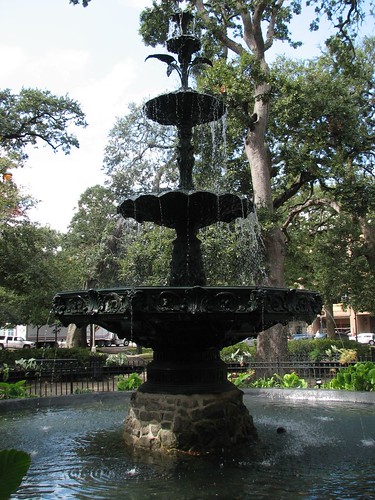
The Cathedral of the Immaculate Conception, dedicated in 1850, is the seat of the Catholic Archdiocese of Mobile.
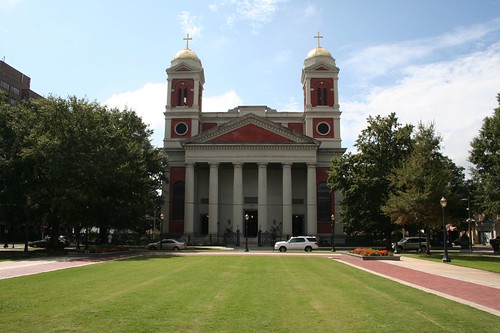
After a brief tour of Mobile, we moved along to Florida.
1 comment:
An Excellent trip through the true old time south. Your photos and tour were great - thanks!
Post a Comment